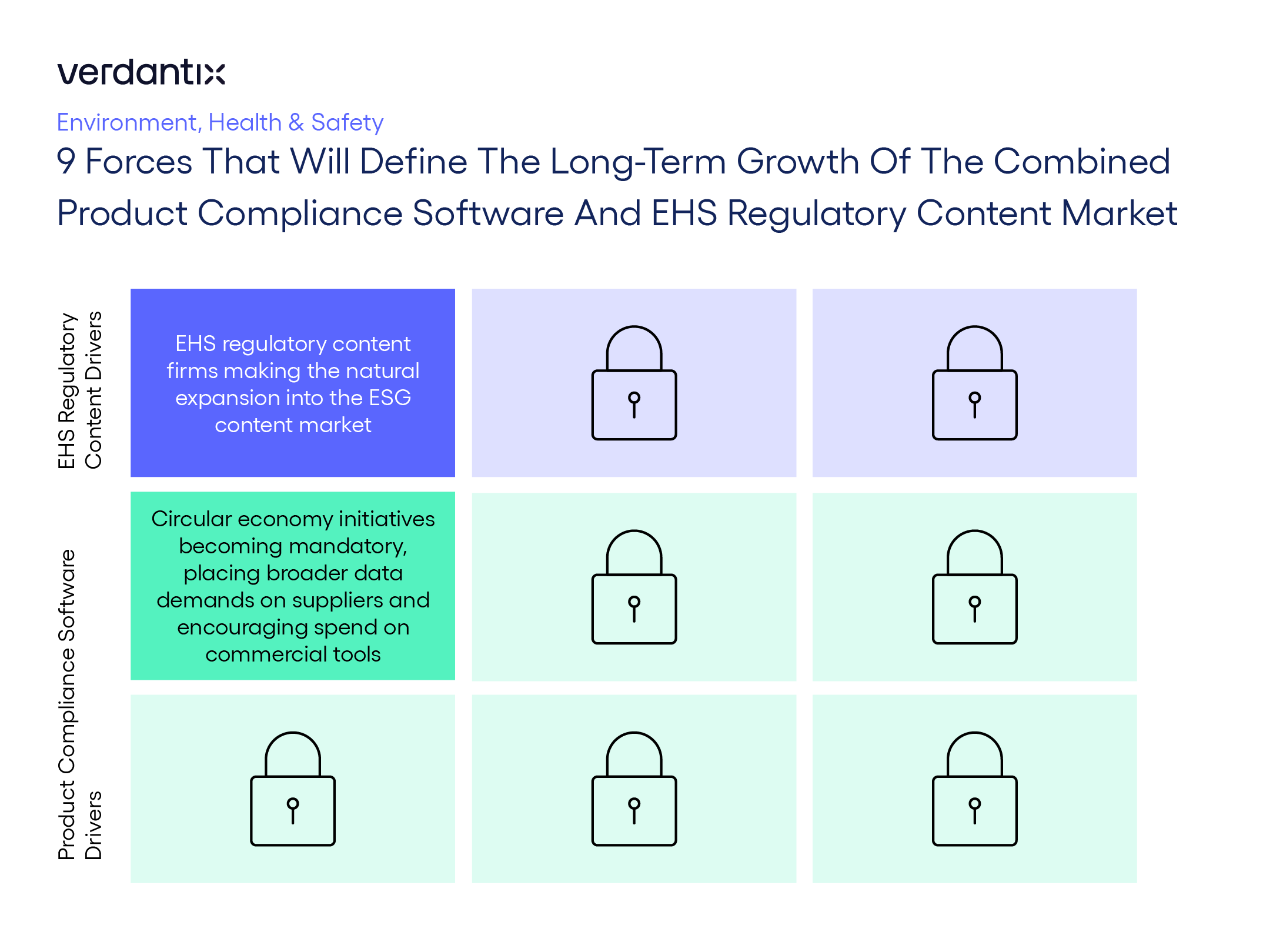Nine Forces Will Drive The Aggregate Product Compliance Software And EHS Regulatory Content Market To Reach $1.4 Billion In 2028
According to the recently published Verdantix market size and forecast report, global market spend on product compliance software and EHS regulatory content will reach $781 million in 2023 and grow at a CAGR of 13.4% to reach $1.46 billion in 2028. Our forecast leverages confidential financial information and feedback provided by prominent vendors in the market, as well as estimated bottom-up projected revenue per employee calculations. These data points form an accurate market baseline upon which Verdantix builds in macroeconomic trends, vendor expectations and regulation-driven market influencers, to forecast the market’s future. While the product compliance and EHS regulatory content markets are complementary, they have distinct market drivers and so have been modelled separately.
Taking a deeper look, the product compliance software market will be worth $658 million in 2023, whereas $123 million is dedicated to EHS regulatory content. This discrepancy in spend is, in part, driven by the contrast in market dynamics; there are a huge wealth of competing solutions vying for market share within the product compliance space, spanning product stewardship and supply chain specialists, EHS software providers, enterprise resource planning solutions, product data management and product lifecycle management firms. In comparison, the EHS regulatory content market is more consolidated, partly because the resource-intensive nature of curating regulatory content constructs a high barrier to entry.
What’s likely to shape these markets’ growth trajectory moving forward? Our forecast identifies no less than nine forces that will drive spend through 2028. Among these, two are driven by the ESG mega trend and its implications for product and EHS compliance. Firstly, the line between EHS and ESG content is becoming increasingly blurred due to the array of data EHS contributes to ESG frameworks. For instance, a prominent voluntary ESG framework, the Global Reporting Initiative (GRI), which is reported by more than 10,000 organizations globally, covers topics relating to water and effluents, emissions, waste, and occupational health and safety – all of which fall under the EHS umbrella. This subject matter crossover, the complexities of ESG legislation and the fact that many organizations will make EHS software their ESG reporting tool of choice mean that EHS content providers are well positioned to expand revenue through ESG offerings. Some firms have already taken note, including Enhesa, which has a dedicated ESG regulatory content offering.
The product compliance software market is certainly not immune to ESG trends either. Products can consume huge volumes of raw materials, energy and other resources, placing them in the crosshairs of a host of ESG regulations, as well as emerging circular economy initiatives led by the EU’s Circular Economy Action Plan (CEAP). For the purpose of this market size analysis, revenue from supply chain sustainability functionality has been omitted, but we anticipate that the expanded scope of product compliance data demands will encourage investment in commercial data management tools.
To learn about the other seven forces that will define long-term growth for the product compliance software and EHS regulatory content markets, and which industries and regions will grow the fastest through to 2028, read Verdantix Market Size And Forecast: Product Compliance & EHS Regulatory Content 2022–2028 (Global).

About The Author

Chris Sayers
Senior Manager





